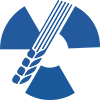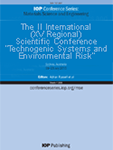Model of the thyroid gland irradiation in the radiobiological experiment analysis
Denisova E.N., Snegirev A.S., Budarkov V.A., Kurachenko Yu.A., Kozmin G.V.
IOP Conference Series: Materials Science and Engineering. V. 487. N.1. 012028.
Radiation accidents at nuclear installations are usually accompanied by releases of volatile and biologically dangerous iodine radionuclides into the environment, which can lead to contamination of large areas and cause irradiation of the thyroid gland (TG) in the population and mammals. The reference representatives of biota in radioactive contamination of agricultural ecological systems can be agricultural animals. The basis for the selection of farm animals as reference species is the availability of data of constant veterinary control of animal health indicators and characteristics of their changes due to radiation exposure. To date, the regularities of radiation pathology of the thyroid gland in farm animals with the arrival of radioactive isotopes of iodine have been studied. At the same time, the computational base and software for quantitative analysis of dynamics of formation of radiobiological effects are not sufficiently developed. Using numerical models, namely: a) a compartment model of the 131I metabolism and (b) precise radiation transport model for the thyroid gland the radiobiological characteristics for calves' thyroid irradiation is derived for the experimental conditions. As a result of experimental and calculated data comparison, critical dose resulting in rapid (within a day) radiation destruction of the parenchymal thyroid tissue was estimated.


